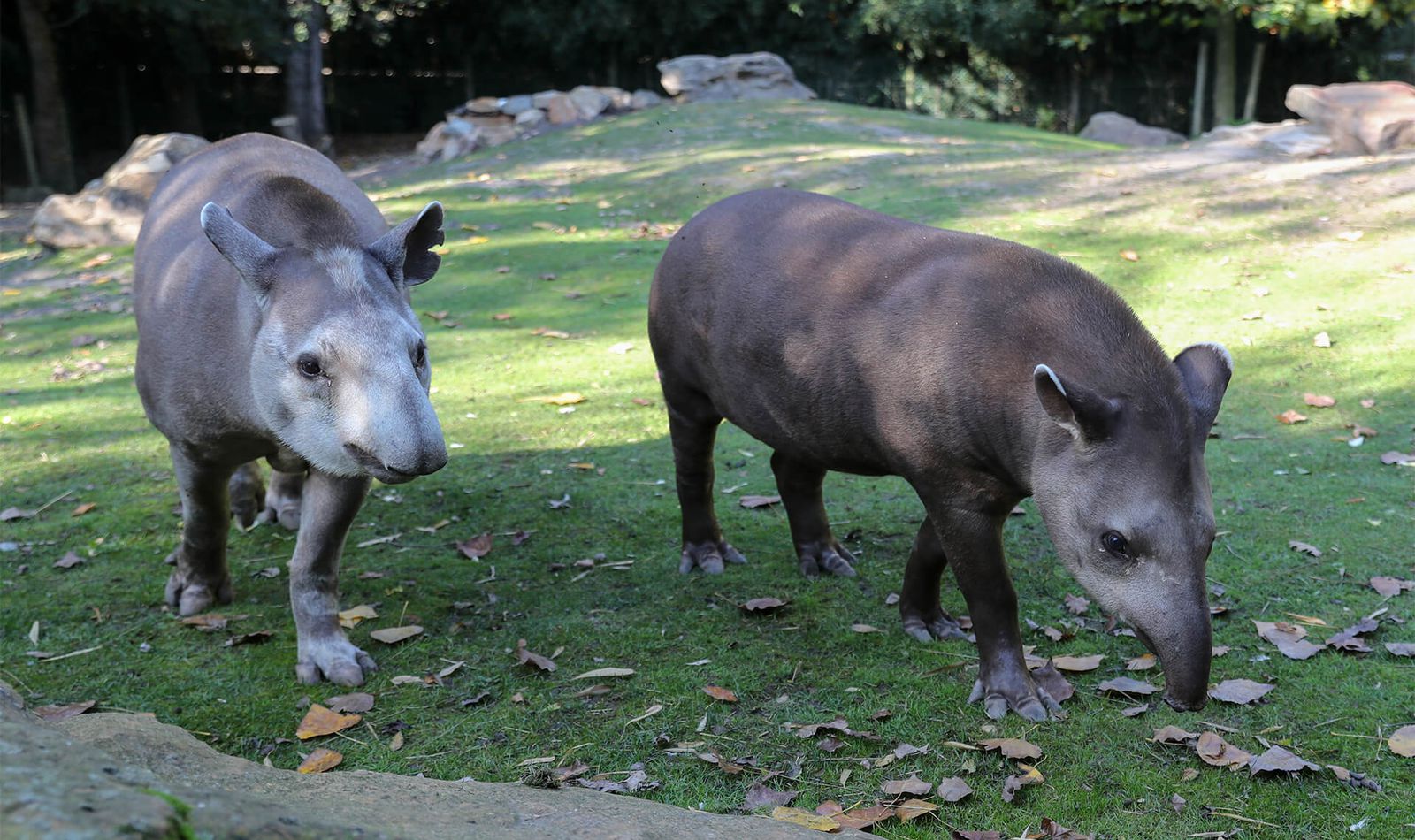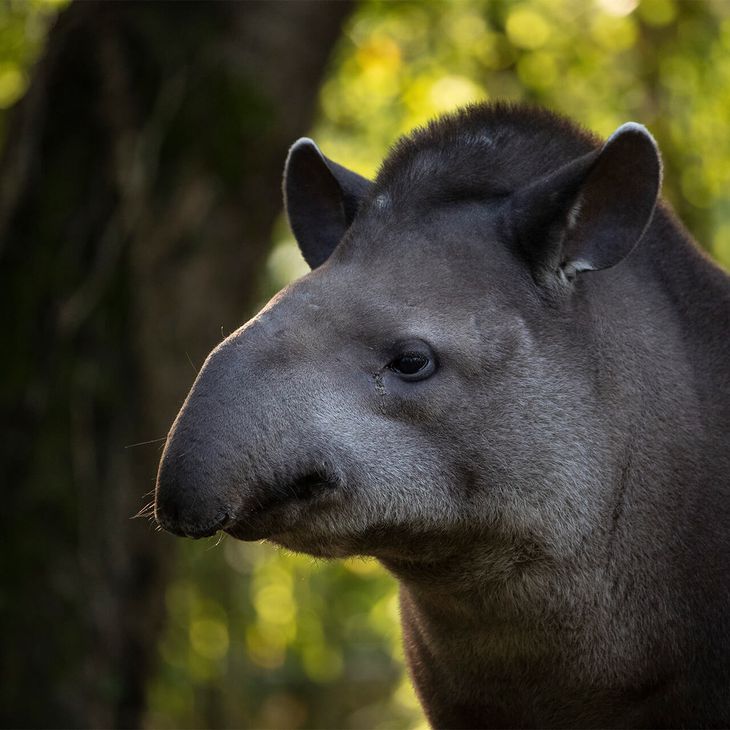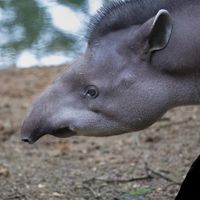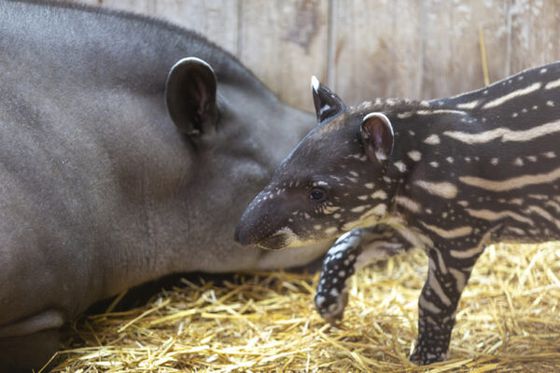« The tapir loves to submerge itself and walk along the bottom of swamps and rivers »
Like a tapir in water
With its robust physique it does not seem as though it is destined to swim, and yet…
Is that a snorkel moving around the surface of the tapirs’ pool? Watch it a little more closely and you will see that it is in fact a tapir… or rather, the trunk of a tapir! The lowland tapir or Brazilian tapir can be recognised by the small flexible trunk at the end of its snout. It is used to catch food (fruit, leaves, aquatic plants etc.) and to breathe when the tapir is walking underwater. This is because the tapir loves to submerge itself and walk along the bottom of swamps and rivers. It is an excellent swimmer and will readily hide in the water when in danger.
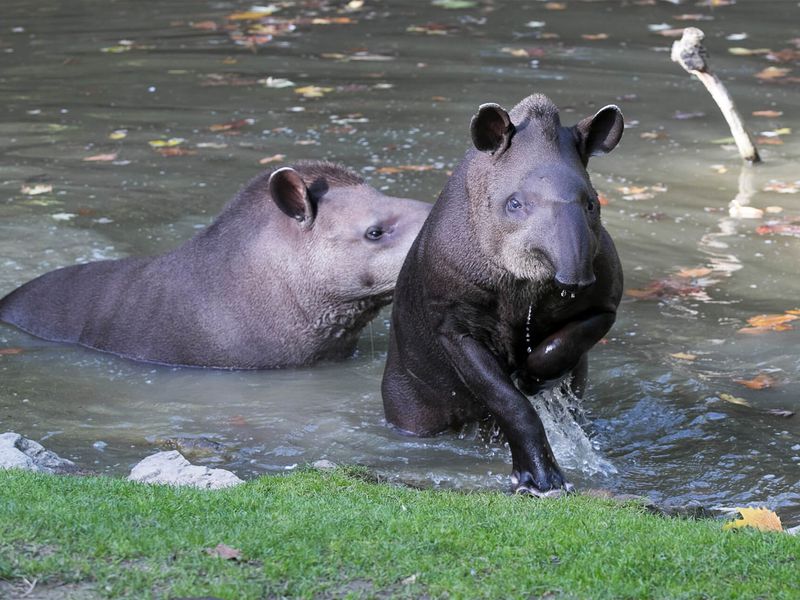
Did you know?
Medical training
Training with lowland tapirs
In order to perform non-surgical medical treatments or procedures, the keepers train the lowland tapirs to be manoeuvred and touched without fear. A relationship built on trust and patience is the key to successful medical training!
Beauval Nature save the Pantanal tapirs
The Beauval Nature association supports the Brazilian IPE Institute for Ecological Research’s conservation programme which works towards the protection of tapirs in the marshland region of the Pantanal, in central-west Brazil.
The aim of the programme is to assess the distribution of the species, their health status, and the possibility of creating a protected area. For this, the IPE fits the animals with radio-collars in order to follow their movements, and to determine their habits and social organisation.
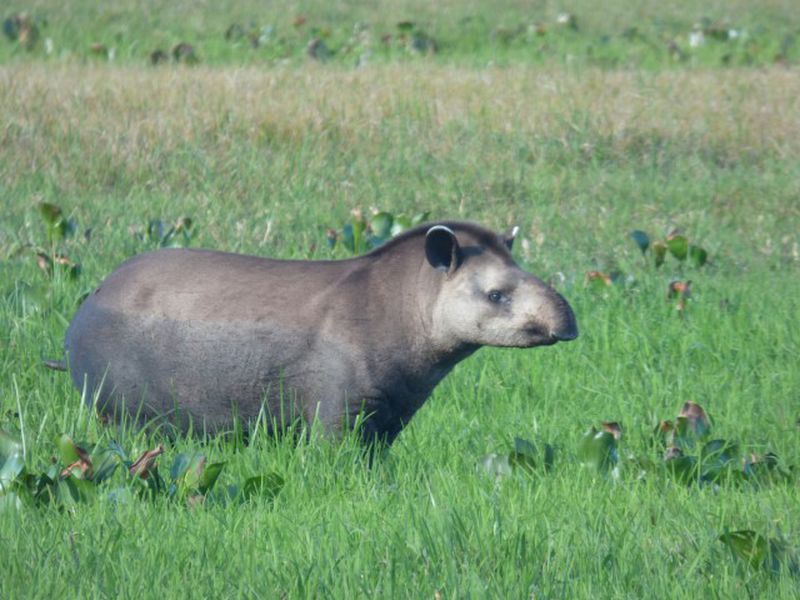


Sponsor our lowland tapirs!
Establish a strong bond with your favourite animal whilst supporting conservation programmes through the Beauval Nature association!
Vulnerable
Learn more about the species
-
HerbivoreDiet
-
13 monthsGestation period
-
1 to 2 youngLitter size
-
Tropical forestsHabitat
A long reproductive cycle
Secretive and territorial
A key role in the ecosystem

Take full advantage of the experience thanks to our mobile application!
Find out more
